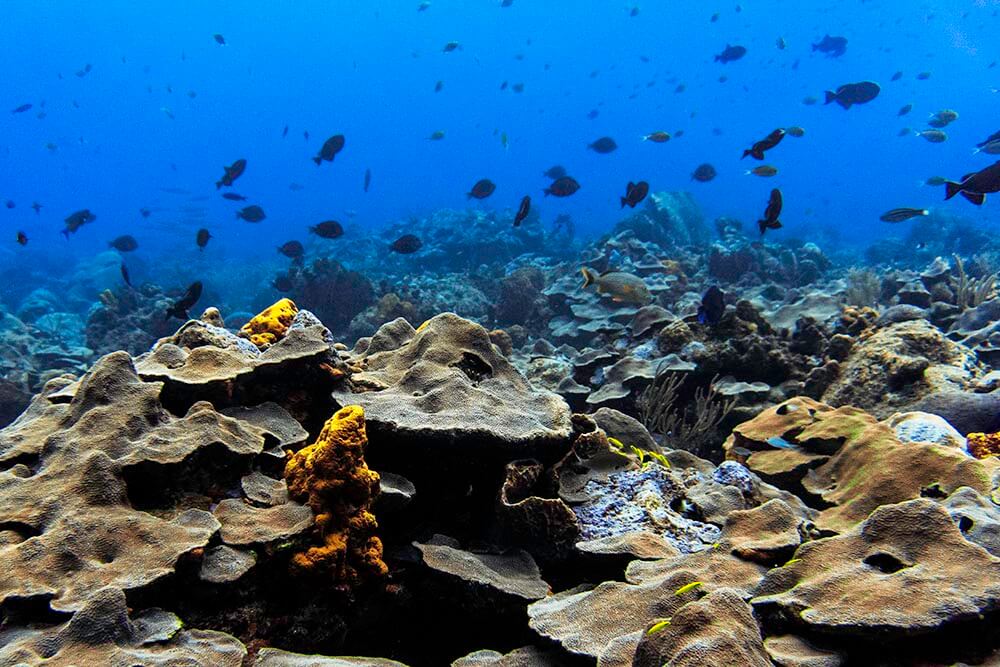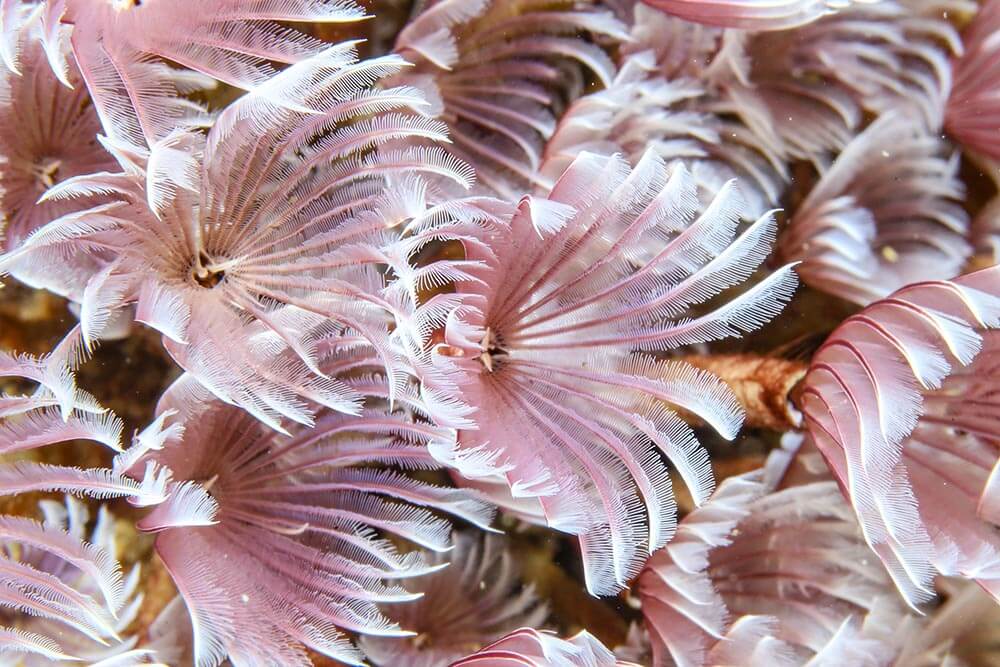
Sponsored Feature
Tobago is a perfect dive destination for learning to scuba dive. The conditions make it suitable for both intermediate and novice divers and the island has a number of established dive operators with more than 30 years of experience.
Tobago has a variety of intermediate and beginners dives sites all around the island offering a range of easy drifts and shallow dives, rich with marine life and a variety of thriving coral reefs with a wide diversity of fish and critters. Tobago also has some shallow wall dives which descend to a depth of just 10m/30ft, are close to shore and and full of interesting crevices perfect for spotting spiny lobsters and moray eels.
Diving is split between the island’s Atlantic and Caribbean coasts. Nutrient-rich waters from the outflow of the Orinoco River’s massive delta are driven along Tobago’s Atlantic coast by the Guyana current, the life-blood of the island’s strong and vibrant coral reefs. More than 300 species of coral – including some of the largest-known brain corals in the world – and 700 different species of fish can be found in Tobago’s waters.

The current makes for some thrilling drift dives along the Atlantic coast, especially between July and December when the nutrient-rich waters attract a wide variety of species – from smaller schools of fish feeding on plankton blooms to the larger, pelagic species that hunt them. Jacks, barracuda and tarpon are regularly spotted, as are several different species of shark, manta rays, eagle rays and turtles.
Tobago’s Caribbean coast, on the other hand, is less exposed to the elements, with less in the way of current but with excellent year-round visibility among the vibrant, sheltered reefs and a host of reef fish species. The Caribbean coast is also home to Tobago’s most popular wreck, the 30m-deep wreck of the Maverick, a former car ferry sunk as an artificial reef in 1997.

For the more experienced diver, a visit to The Sisters, two small rocky islands approximately 3km out to sea has a good potential for shark sightings, especially during the winter months, when scalloped hammerheads have been known to school in groups of up to 40 animals.
Water temperature averages between 25- 29°C (77-85 °F), with February and March the coolest months and August and September warmest, making for very comfortable diving throughout the year, especially for entry-level training.

Why dive in Tobago?
Tobago’s nutrient-rich waters create strong, vibrant coral reefs with a plethora of coral and fish species. There is a range of depths and diversity of marine life that is suitable for all levels of diver, so whether you’re just starting out, or have many hundreds of dives under your weight belt, Tobago diving has something for everyone. Here are just a few images from the best of Tobago’s diving.
Tobago Dive Centres
There are several dive centres around the island, of which the following are currently listed on the Tobago Beyond tourism website. There is also a hyperbaric chamber on the island, providing rapid access to emergency treatment, if required.

1. Undersea Tobago
Undersea Tobago is owned and operated by husband and wife team Derek and Evelyn Chung. Diving in Tobago waters since 1987 has given them the experience and local knowledge necessary to give you an exhilarating and safe diving experience. In 1997, Evelyn and Derek decided to start their own dive centre, Undersea Tobago, a PADI dive resort designed to give personalized and professional attention to the novice and experienced diver alike.
www.underseatobago.com
2. Environmental Research Institute Charlotteville (ERIC)
Located in the traditional fishing village of Charlotteville, Tobago, the Environmental Research Institute Charlotteville works towards sustainability for the people and ecosystems of North East Tobago. Alongside the institute, the ERIC Dive Centre offers dive training, coral reef ecology, survey and monitoring training, and dive excursions and expeditions with marine biologists for environmentally conscientious divers.
www.eric-tobago.org

3. Frontier Divers
Tobago Frontier Divers is a certified Scuba Dive Centre, registered with the Tobago Dive Association (ATDO). The centre is located at Sandy Point Beach Club, an RCI Resort situated at the southwestern tip of the island. Frontier is one of the only locally owned dive shops on the island of Tobago. It is owned and managed by a husband and wife Alvin & Kerry Douglas.
www.tobagofrontierdivers.com
4. Tobago Dive Experience
Tobago Dive Experience was founded by Sean Robinson, a dive instructor with more than 30 years of experience as a commercial and recreational diver, and his wife Kathleen, a dive travel industry veteran of more than 15 years. Sean and his team are dedicated to teaching the country to dive with programmes available in schools as well as dive resorts. The dive shop in Speyside is still the major focus for couple, with Sean and the dive crew keen to entertain and showcase the best of the island’s diving, while Kathleen helps to plan every detail of the customers’ trips.
www.tobagodiveexperience.com
Topside in Tobago

There is much to do in Tobago in between dive excursions. For watersports enthusiasts who enjoy the surface as much as the depths, Tobago is perfectly suited to wind and kite surfing, stand-up paddleboarding, sailing and kayaking at Pigeon Point Heritage Park – and for a special treat, make sure you book a spot on Tobago’s Bioluminescence Experience, which also departs from Pigeon Point
Bird watching and nature Trekking at the Main Ridge Forest Reserve, the oldest protected forest reserve in the western hemisphere, is a great way to spend a day enjoying the vibrant life that Tobago harbours above the surface of the water.

Visit the Tobago Museum at Fort King George which overlooks the Capital Scarborough to explore some of Tobago’s cultural heritage, and local crafts and gifts can be bought at Storebay beach as well as trips to snorkel Buccoo Reef and visit Tobago’s swimming pool in the middle of the sea, The Nylon Pool.
Tobago’s legendary carnival-atmosphere nightlife is best enjoyed in Crown point on Fridays and Saturdays and the ‘Sunday School’ street party in Buccoo Village on Sundays is not to be missed!.















